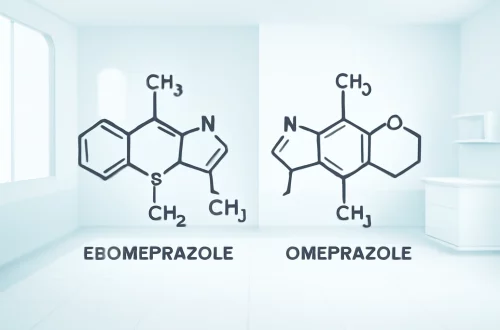
Understanding Canine Mast Cell Tumors Through Photos and Insights
Mast cell tumors (MCTs) are a type of cancer that can affect dogs, arising from mast cells that play a vital role in the immune system. These tumors are among the most common cutaneous neoplasms in canines and can present in various forms, making it crucial for pet owners and veterinarians to recognize the signs and symptoms early. Understanding the nature of mast cell tumors is essential not only for effective treatment but also for improving the overall quality of life for affected dogs.
Diagnosing MCTs can often be a complex process. The tumors may appear as lumps or bumps on the skin, and their appearance can vary significantly—from benign to malignant forms. This variability can lead to misdiagnosis or delayed treatment if the signs are not adequately recognized. Therefore, educating pet owners about the visual and behavioral signs of these tumors is paramount. With a combination of clinical insight and visual aids, such as photographs and descriptions, we can foster a deeper understanding of canine mast cell tumors.
In this article, we will explore the characteristics, diagnosis, and treatment options available for mast cell tumors in dogs, alongside helpful visual references to aid in identification and understanding.
Recognizing the Signs of Mast Cell Tumors
Identifying mast cell tumors in dogs begins with close observation of any changes in your pet’s skin or behavior. These tumors can manifest in various ways, predominantly as firm lumps or nodules on the skin. They may appear singly or in multiples, and their surface can be smooth, ulcerated, or even scabby.
One common sign to look for is swelling or inflammation in a localized area. A mast cell tumor might cause the surrounding tissue to become red or swollen, which could be mistaken for an insect bite or allergic reaction. In some cases, these tumors can also change in size, sometimes shrinking before reappearing larger. This behavior is notably characteristic of mast cell tumors, as they can release histamines and other substances into the body, leading to transient swelling.
The location of these tumors can vary, with common sites including the trunk, limbs, and even the face. However, it’s crucial to remember that not all lumps are cancerous, and benign tumors can also occur in these areas. Thus, any new growth or change in your dog’s skin should warrant a visit to the veterinarian for further evaluation.
In addition to the physical signs, behavioral changes may also provide clues. A dog with a mast cell tumor may exhibit signs of discomfort, such as excessive licking at the site of the tumor, restlessness, or changes in appetite. While these signs can be associated with various conditions, their presence in conjunction with noticeable lumps should raise a red flag.
Photographs can be an invaluable resource for pet owners. Visual examples of mast cell tumors can help individuals better understand what to look for and when to seek veterinary advice. By familiarizing yourself with these images, you can become more proactive in monitoring your dog’s health.
Understanding the Diagnosis Process
The diagnosis of mast cell tumors typically involves several steps, beginning with a thorough physical examination by a veterinarian. During this examination, the veterinarian will assess the size, texture, and location of any lumps or bumps present on your dog. They may also inquire about your pet’s medical history and any symptoms that have been observed.
If a mast cell tumor is suspected, the next step often involves performing a fine needle aspiration (FNA). This procedure entails using a thin needle to extract cells from the tumor for cytological examination. The sample is then examined under a microscope to determine the presence of mast cells and the degree of malignancy.
In some cases, a biopsy may be required to obtain a more definitive diagnosis. A biopsy involves removing a portion of the tumor for laboratory analysis, which can provide detailed information regarding the tumor type and grade. This information is critical, as it guides treatment options and helps predict the potential behavior of the tumor.
It is important to note that not all tumors are created equal. Mast cell tumors are graded based on their histological characteristics, which can range from low-grade tumors that have a better prognosis to high-grade tumors that pose a greater risk. Understanding the grade of the tumor is essential for determining the appropriate course of action.
Veterinarians may also recommend additional diagnostics, such as blood tests, imaging studies, or staging procedures, to assess the tumor’s behavior and check for metastasis. These tests provide a comprehensive overview of your dog’s health and can inform treatment decisions.
Photographic documentation throughout this process can serve as a helpful reference, allowing both pet owners and veterinarians to track changes over time and assess the effectiveness of treatment options.
Treatment Options for Mast Cell Tumors
Treating mast cell tumors in dogs can vary significantly based on the tumor’s grade, size, and overall health of the dog. The most common treatment for localized mast cell tumors is surgical excision. This involves the complete removal of the tumor along with a margin of healthy tissue to minimize the risk of recurrence. The success of surgical treatment largely depends on the tumor’s grade and whether it has spread to surrounding tissues.
In cases where surgical removal is not possible or the tumor is high-grade, additional treatment options may be considered. Chemotherapy is one such option, particularly for dogs with multiple tumors or those with a poor prognosis. Chemotherapy can help manage the disease and improve quality of life, although it may come with side effects that require careful monitoring.
Another treatment modality that has gained attention is the use of targeted therapies, such as kinase inhibitors. These drugs specifically target pathways involved in tumor growth and have shown promise in treating mast cell tumors in dogs. As research continues, these therapies may become more widely available and offer new hope for affected pets.
In addition to medical treatments, supportive care plays a crucial role in the management of mast cell tumors. This may include anti-histamines to alleviate symptoms associated with histamine release, pain management, or dietary adjustments to support overall health.
It is essential for pet owners to have open communication with their veterinarians about treatment options and associated risks. Regular follow-up appointments and monitoring are critical to assess the effectiveness of the chosen treatment and make any necessary adjustments.
As with any medical condition, discussing all available options and their implications with a qualified veterinarian is vital. Photographs of the tumor’s progression can be helpful in these discussions, providing visual evidence of changes and responses to treatment.
**Disclaimer:** This article is for informational purposes only and should not be considered medical advice. Always consult with a veterinarian for health-related concerns regarding your pet.




